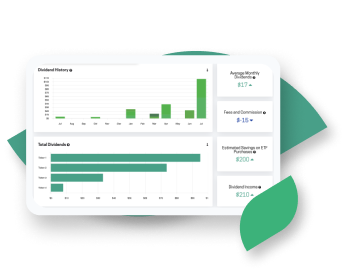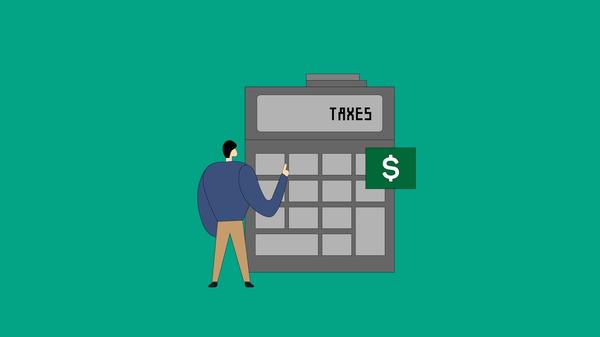Dividend Power is a self-taught investor and blogger on dividend growth stocks and financial independence. Some of his writings can be found on Seeking Alpha, TalkMarkets, ValueWalk, The Money Show, Forbes, Yahoo Finance, and leading financial blogs. He also works as a part-time freelance equity analyst with a leading newsletter on dividend stocks. He was recently in the top 4% out of over 8,041 financial bloggers as tracked by TipRanks (an independent analyst tracking site) for his articles on Seeking Alpha.
Read his article about Passiv: A Review of Passiv – A Modern Portfolio Management Website.
There are investors who prefer investing directly in dividend stocks. I am one and believe that dividend growth investing has advantages. But there are also investors who do not desire to invest directly in stocks and instead prefer investing directly in exchange traded funds or ETFs. There are some advantages to investing in ETFs from the perspective of diversification and ease. There are also some negatives in that you must pay management expense ratio and have less control over buying and selling individual equity positions. However, expense ratios are often low in passively managed ETFs, which is an advantage. Furthermore, you may lack the time to properly research and invest in individual dividend stocks. In that case, dividend ETFs may be the best choice.
What is an ETF?
Before we talk about the Best Dividend ETFs in Canada for 2021 let’s first discuss the basics of an ETF.
An ETF is sort of like a hybrid between an index mutual fund and a stock. An ETF is a type of security that tracks an index, sector, commodity, currency, or investment strategy, but can be bought and sold on an exchange like a stock while the market is open.
Because an ETF can be bought and sold throughout the day, its share price fluctuates much like a stock, which is different than a mutual fund. Mutual funds trade once per day after the market closes. However, much like a mutual fund, investors own a part of the ETF and not the underlying assets.
Some Advantages and Disadvantages of ETFs
The structure of ETFs provides two main advantages compared to stocks: they provide diversification and are easily traded. For instance, an ETF that tracks the S&P 500 index would own all or most of the stocks in the index. Hence, investors can easily own the entire index without having to buy all the stocks.
An ETF also has two primary disadvantages compared to stocks: they have a management expense ratio and you do not control which stocks the ETF owns. The expense ratios are, however, low and often lower than active and passive mutual funds. This is important as expense ratios can impact returns. You are also not in control of buying and selling individual stocks in the ETF. This is up to the fund manager. You can buy and sell shares of the ETF. However, the fund manager makes the decisions about the actual stocks held by the ETF. In general, if the ETF tracks an index, it will own the entire index although that is not always the case. There are some other advantages and disadvantages that you can read here.
Choosing the Best Dividend ETFs in Canada for 2021
If dividend investing is something that you are interested in, then dividend ETFs may be a good choice for you. This is especially true if you lack the time to research and invest directly in dividend paying stocks. The nice part is that the number of ETFs continues to grow each year giving investors in Canada a wider selection to choose from.
Canadian dividend ETFs will have some similarities, but they are not all the same. Due to the nature of the Canadian stock markets, essentially all Canadian dividend ETFs have high exposure to the Financial and Energy sectors. Other sectors with large presence include Utilities and Communications. However, there are differences in weighting between the ETFs and in fund characteristics.
Criteria for the Best Dividend ETFs in Canada for 2021
Many other lists of top or best Canadian Dividend ETFs list almost every single one that is available. However, it is useful to analyze the Canadian Dividend ETFs in order to differentiate between them. But what criteria are important?
One criterion that I think is important is the management expense ratio or MER. You want the MER to be as low as possible when investing in ETFs all else being equal. Expenses will subtract from your returns and this effect will grow over time if you are buying and holding the ETF for a long duration.
Next, since we are looking at dividend ETFs the yield is important. All else being equal we want a higher yield.

Keep track of your dividends
Connect your brokerage account to Passiv, and get above and beyond insights on your dividends with Reporting
Get StartedThe next factor to assess is total assets. In general, an ETF with greater assets is more liquid and has a lower chance of closing or being merged with another ETF. For example, First Asset Morningstar Canada Dividend Target 30 Index ETF was recently merged with other ETFs. This is not surprising as the fund only had about $11 million CAD in assets and larger funds are cheaper to operate as the expenses are spread out over a bigger asset base. In addition, ETFs with more assets tend to be older and have a longer established history, which is a plus in my opinion.
Lastly, we want diversification. You can look at this from the context of number of holdings and also exposure to sectors. There are 11 sectors not counting cash. These are Communications, Consumer Discretionary, Consumer Staples, Energy, Financials, Healthcare, Industrials, Technology, Basic Materials, Real Estate, and Utilities.
Comparative Analysis
Comparing and analyzing the 8 Canadian Dividend ETFs in our list by our criteria results in the table below.
We can also look at diversification based on percentage of assets in each sector.
Based on the data and criteria that we outlined above, it is apparent that three ETFs standout as the best dividend ETFs in Canada for 2021. These are VDY, XEI, and XIU. I exclude the other ETFs due to higher expense ratios, low assets, and generally not enough diversification. Now let’s take a look at the top 3 ETFs.
VDY – Vanguard Canadian High Dividend Yield Index ETF
VDY tracks the FTSE Canadian High Yield Dividend Index. The fund invests primarily in common stocks of Canadian companies that pay dividends. The FTSE Canada High Dividend Yield Index is a market-capitalization-weighted index that is focused on dividend income. As seen in the tables above over 80% of the holdings are from the Financial and Energy sectors due to the focus on high yield. But the ETF has exposure to six other sectors. The expense ratio is relatively low at 0.21% and the asset base is nearly $1 billion.
The top 10 holdings as of this writing are Royal Bank of Canada (RY), Toronto-Dominion Bank (TD), Enbridge (ENB), Bank of Nova Scotia (BNS), Bank of Montreal (BMO), TC Energy Corp (TRP), Canadian Imperial Bank of Commerce (CM), Manulife Financial Corp (MFC), BCE Inc (BCE), and Canadian Natural Resources Ltd (CNQ).
XEI – iShares Core S&P/TSX Composite High Dividend Index ETF
XEI tracks the S&P/TSX Composite High Dividend Index. The fund seeks long-term capital appreciation. The table above illustrates that the fund has large exposure to Financials, Energy, Communications, and Utilities sectors. But the ETF has exposure to a total of 9 sectors. The expense ratio is low at 0.22% and the asset base is a little over $1 billion.
The top 10 holdings are Toronto-Dominion Bank (TD), Royal Bank of Canada (RY), TC Energy Corp (TRP), BCE Inc (BCE), Enbridge (ENB), Bank of Nova Scotia (BNS), Canadian Natural Resources Ltd (CNQ), Pembina Pipeline Corp (PPL), Suncor Energy (SU), and Nutrien Ltd (NTR).
XIU – iShares S&P/TSX 60 Index ETF
XIU tracks the S&P/TSX 60 Index. The fund seeks long-term capital appreciation. XIU is the oldest Canadian Dividend ETF with an inception date in 1999. The ETF is also the largest with over $12 billion CAD in assets. XIU has greater exposure to the Financials sector, but it does have exposure to all sectors except Real Estate. The expense ratio is low at 0.18%
The top 10 holdings are Royal Bank of Canada (RY), Shopify (SHOP), Toronto Dominion (TD), Bank of Nova Scotia (BNS), Enbridge (ENB), Canadian National Railway (CNR), Brookfield Asset Management (BAM), Bank of Montreal (BMO), Canadian Pacific Railway (CP), and Canadian Imperial Bank of Commerce (CM).

Build your dividend focused portfolio
Set up your own customized portfolio and let Passiv do the work to manage your investments
Get StartedFinal Thoughts on the Best Dividend ETFs in Canada for 2021
The majority of the Dividend ETFs in Canada are focused heavily on Financials and Energy sectors. This is due to the nature of the Canadian stock markets and which stocks pay a dividend. Criteria for inclusion in the underling indices is also a factor. ETFs from BlackRock (BLK) make up 5 out of the 8 on the list of dividend ETFs. This is not surprising since BlackRock is one of the largest ETF providers around the world. This article should help you narrow your focus in researching Canadian dividend ETFs but do your homework and know what you are buying. ETFs can help you help you build wealth even if you are only starting to invest with little money.


